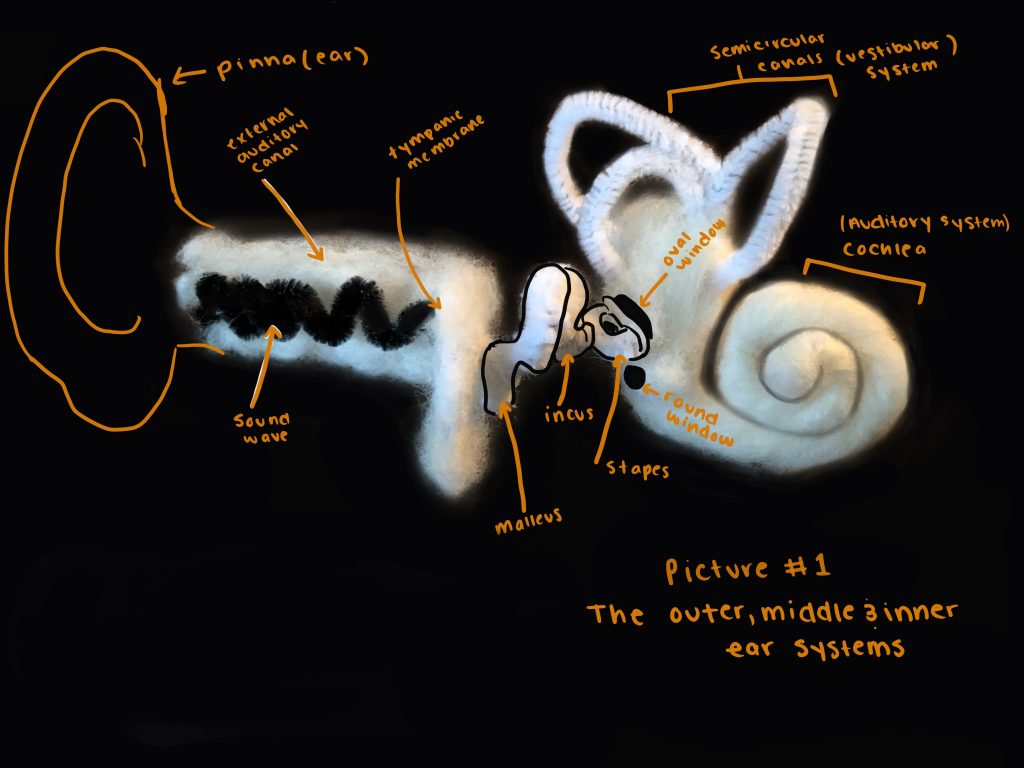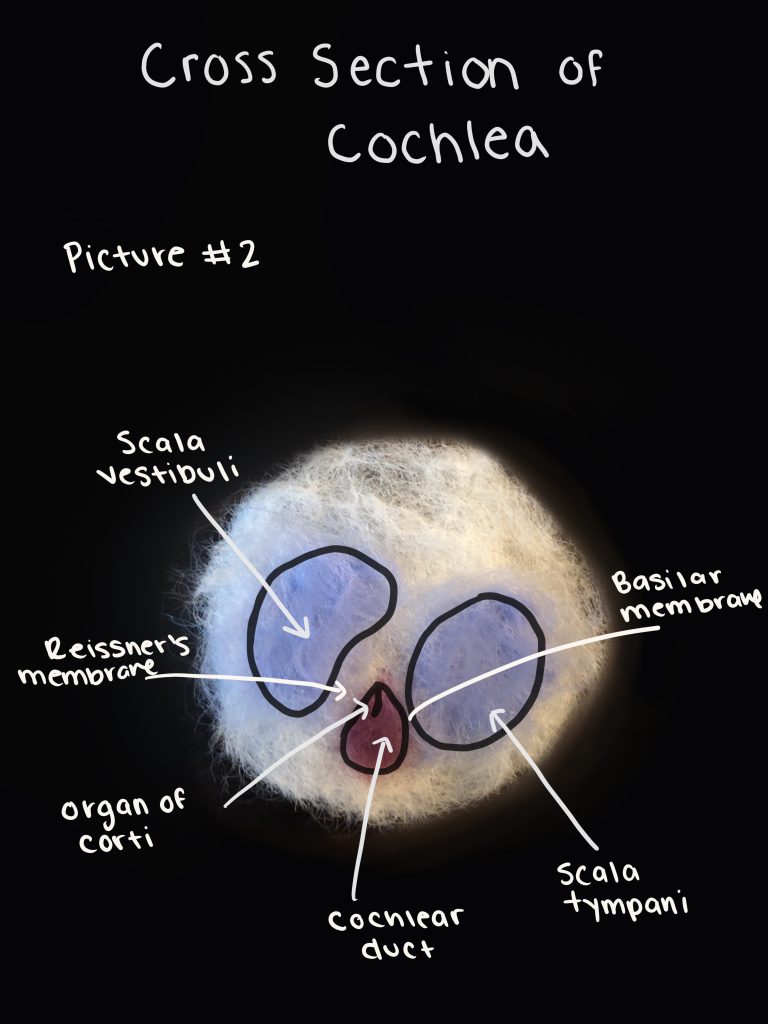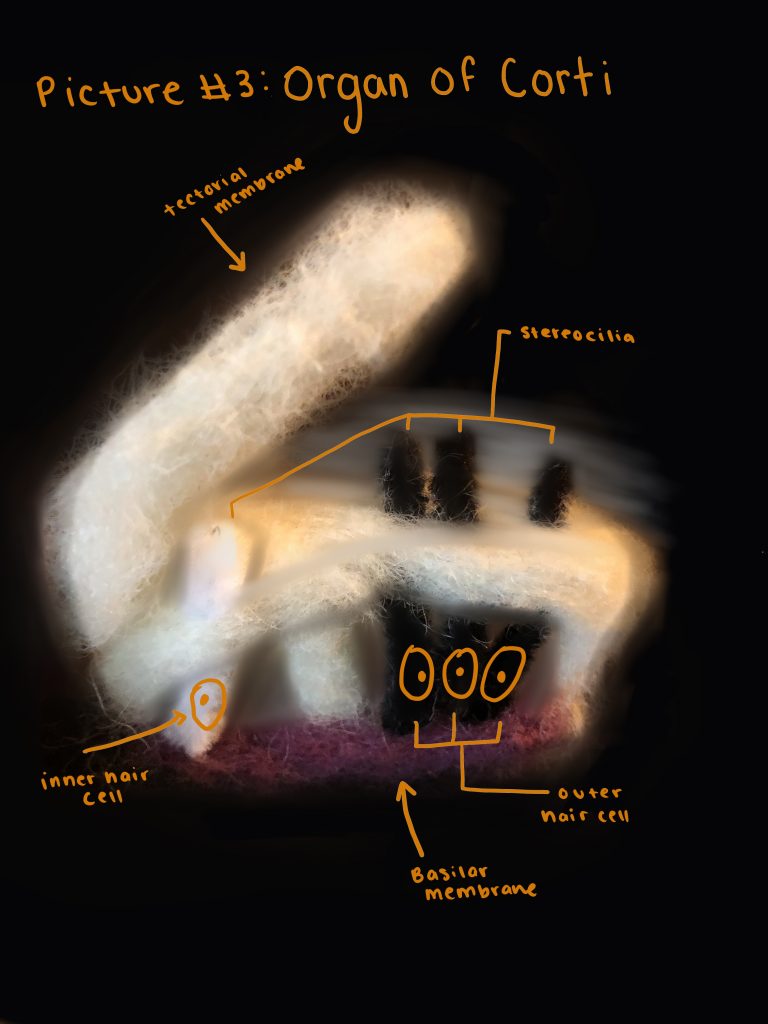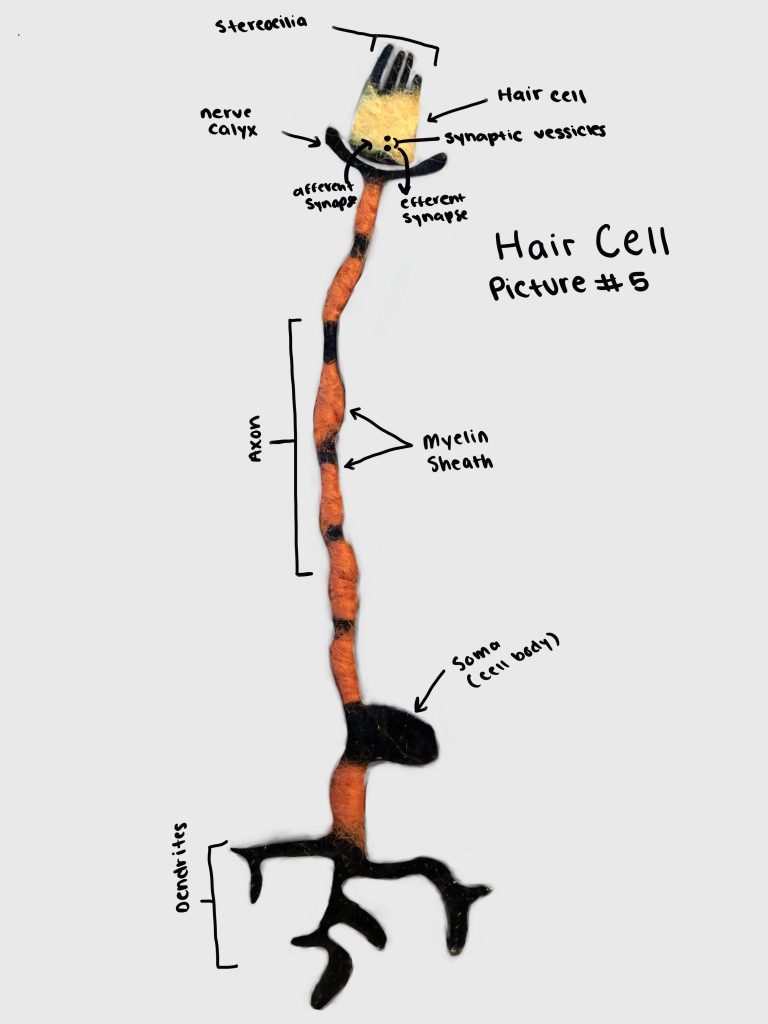




How the brain converts sounds waves into recognizable units, such as speech or environmental noise, is a complex system. This auditory system starts with the ear where sound waves are converted into electrical stimuli that can be uncoded by the brain. For a person with sensorineural hearing loss, a type of hearing loss that is a result of damage to the inner ear or auditory nerve, they are unable to convert sound waves into electrical stimuli (transduction). These individuals if they wish to try and restore some of their hearing, they can do so by having a cochlear implant inserted. A cochlear implants (CI) is an electrode that is surgically implanted inside the cochlea of an individual and is used as a mechanism to replace dead hair cells by converting sound waves into electrical stimuli that can be used by the brain. For this project I first looked at how humans convert sound waves into electrical stimuli through use of the auditory system, and then I looked at how cochlear implants work to produce sound recognition.
Humans convert sound waves into electrical signals to send to the brain by use of the auditory system. In picture number 1, I created a needle felted representation of our outer, middle and inner ear structures, all of which are part of the auditory system. Sound waves first enter our outer ear through the external auditory canal where they vibrate against they tympanic membrane. This is the reception part of sensation. (Lumen Learning, n.d.) The tympanic membrane vibrates and the malleus which is attached to it sets the other bones (incus and stapes) in motion. The stapes vibrate agains the oval window which is one of two openings in the bony labyrinth that contains the cochlea. The cochlea is divided into three fluid filled chambers: the scala vestibuli, the scala tympani, and the cochlear duct which houses the organ of corti. (JuanVelasquez et al., 2017) This can be seen in the second image. The fluid in the cochlea gets displaced by the vibrations; the displaced fluid moves the basilar membrane that is at the bottom of the cochlear duct and is attached to the organ of corti, which is depicted in the third image. The organ of corti contains a matrix of four rows of hair cells (auditory sensory nerves), three outer hair cells and one row of inner hair cells. The inner hair cell is responsible for creating action potentials. As the basilar membrane moves the hair cell’s top part, the stereocilia, come in contact with the top of the tectorial membrane and hinge to one side (Wilson & Dorman, 2008). In picture four, you can see the displaced stereocilia, which is connected to a mechanoreceptor that response to the pressure at the tectorial membrane by opening the gated ion channels. This allows the sensory neurons to change their electrical potential until it reaches the threshold potential and fires activating the surrounding neurons. This is the transduction portion of sending sensory information. The electrical signal that the neurons send get sent to the auditory nerve where it is first encoded and then sent through the CNS and thalamus and then finally to the auditory processing region of the cortex to be uncoded and perceived by the brain as auditory stimuli (Lumen Learning, n.d.).
A CI is responsible for taking over the transduction of the sensory information. A cochlear implant electrode is inserted into the scala tympani chamber of the cochlea (Wilson & Dorman, 2008). Similarly to a normally functioning cochlea, the CI electrode will stimulate the base of the cochlea for high frequency sound and the apex of the cochlea for low frequency sounds and the electrical signal will get sent directly to the auditory nerve. The base of the cochlea responding to high frequency sound and the apex of the cochlea responding to low frequency sounds is called a tonotopic function and is what cochlear implants mimic (Wilson & Dorman, 2008). However for cochlear implants the middle and outer ears are skipped over and instead the individual wears a microphone receiver on the outside of their skull which allows for the sound to be picked up and sent directly to the CI electrode inside. However, even with a cochlear implant a person will not have the same kind of speech recognition as a person with normal hearing. There are multiple factors that can affect the speech recognition for CI users, such as duration of hearing loss. Newer studies are looking at the condition of the auditory nerve to see if that plays an important role in speech recognition since it responsible for being the first structure to encode the electrical signal from the CI and then send it to other higher auditory processing structures in the brain (Schvartz-Leyzac & Pfingst, 2018; He et al., 2017). What is interesting about these studies is that they are able to look at compound action potentials that occur after an auditory signal is presented and from the responses determine the overall health of the auditory nerve.
In conclusion, the auditory system is dynamic and contains multiple structures that have to work together to convert auditory stimuli into electrical signals that can be processed by the brain. The auditory system is composed of the outer, middle and inner ear, the auditory nerve and the auditory processing center in the brain. The inner ear which is composed of the cochlea, is responsible for the transduction of auditory sensory information. Transduction occurs when the inner hair cell’s stereocilia is deflected against the top of the tectorial membrane and thus through a mechanoreceptor opens the gated ion channel of the sensory cell, producing action potentials. Cochlear implants bypass the outer and middle ear and use electrodes instead of hair cells to directly stimulate the auditory nerve and ultimately produce sound recognition.
Citations:
He, S., Teagle, H. F. B., & Buchman, C. A. (2017, May 30). The Electrically Evoked Compound Action Potential: From Laboratory to Clinic. Frontiers. https://www.frontiersin.org/articles/10.3389/fnins.2017.00339/full.
JuanVelasquez, Torre, G., Duagi, D., & Frohlich, J. (2017, March 6). The Auditory System: From Sound Waves to Brain Waves. Knowing Neurons. https://knowingneurons.com/2013/03/13/the-auditory-system-from-sound-waves-to-brain-waves/.
Lumen Learning. (n.d.). Biology for Majors II. Lumen, OpenStax. https://courses.lumenlearning.com/wm-biology2/chapter/sensation/.
Schvartz-Leyzac, K. C., & Pfingst, B. E. (2018). Assessing the Relationship Between the Electrically Evoked Compound Action Potential and Speech Recognition Abilities in Bilateral Cochlear Implant Recipients. Ear and hearing, 39(2), 344–358. https://doi.org/10.1097/AUD.0000000000000490
Wilson, B. S., & Dorman, M. F. (2008). Cochlear implants: current designs and future possibilities. J Rehabil Res Dev, 45(5), 695-730.

Humans convert sound waves using electrical signals that are sent to the brain to then be used by the auditory system. Sound waves enter the ear at the outer ear where the canal feels vibrations. This kind of reception is part of the sensation. When the vibrate happens the oval window opens that contains the cochlea. The cochlea is divided into three chambers in which the vibrations are sent through. The fluid in the cochlea displaces the vibrations and I sent through into the inner ear where the inner hair cells are responsible for creating action potentials. This allows sensory neurons to change their electrical potential until it fires and activates the neuron. When looking at cochlear implant’s, the implant is an electrode that is inserted into a chamber of the cochlea. The cochlear implant electrode will stimulate and a higher frequency sound for the electrical signal to be sent directly to the auditory nerve. With cochlear implant’s the middle and outer ear portion is skipped over as the individual words a microphone receiver on the outside of the skull which picks up the sound. The sound is sent directly to the cochlear implant electrode. The auditory system is very complex and contains multiple structures to convert auditory stimuli into electrical signals that are then processed in the brain. Producing action potentials the cochlear implant’s bypass the outer and middle ear and use the electrodes instead of the hair cells to stimulate the auditory nerve and produce sounds recognition.